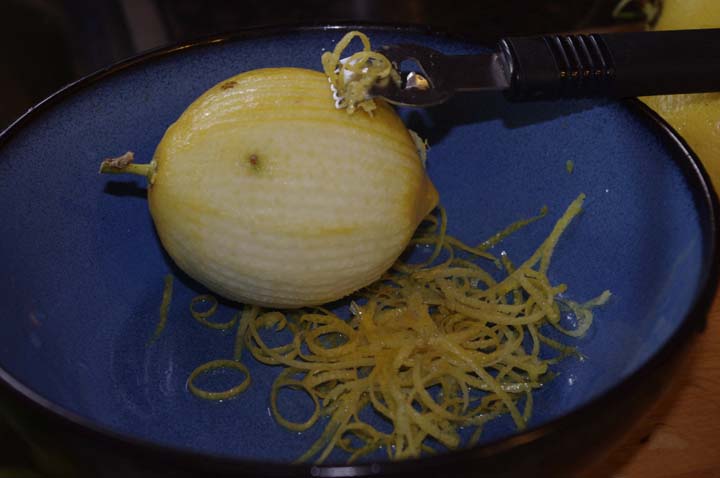Rennet is made up of enzymes that coagulate the milk proteins. Before the laboratories of today, cheesemakers would slaughter a calf or kid, salt and dry the stomach and then would break off a bit of it when it was needed. They would soak this bit of stomach in some water and then add the water to their milk. I've heard one story that cheese was first discovered when a nomad carried milk in a calf stomach which coagulated milk.
The ancient Romans used an extract from the fig tree to coagulate milk. Several other plants contain the enzymes needed for curdling milk including stinging nettle, our lady's bedstraw, thistle flowers, and butterwort. Vegetable rennet is currently available for use if you don't want to use animal rennet, however aging a cheese made with vegetable rennet can become bitter.
 |
| Don't worry if the rennet tablet doesn't completely dissolve |
So you can find animal and vegetable rennet. You can also find it in liquid and tablet form. Either form you will need to dilute before adding it to the milk so as to get a consistent curdle. When diluting the rennet you must use unchlorinated water. Chlorine, which is a very common additive in tap water, destroys the ability of the rennet to curdle milk. Use bottled or distilled water.
 |
| The milk has set correctly if you can cut it with a knife |
You can use just about any type of milk for this EXCEPT Ultra-Pasteurized. The high temps used when ultra-pasteurizing milk destroys the proteins and you'll end up with ricotta instead of mozzarella.
 |
| With a long knife, cut the curd |
Now that you've got your rennet, citric acid and milk together and you have all your equipment let's make some cheese!
1. Dissolve 1-1/2 tsp citric acid in a 1/4 cup unchlorinated water.
2. Dissolve 1/4 tablet of rennet or 4 drops of liquid rennet in 1/4 cup unchlorinated water.
 |
| Draining the whey from the curds |
4. After 5 minutes check to see if the curd easily separates. If it doesn't wait a few more minutes.
5. Cut the curd into 1" squares.
6. Slowly heat the curds up to 105 deg F while gently stirring them.
7. Once they've come up to temperature ladle the curds into a colander lined with cheesecloth and allow the curds to drain. Save the whey though! We want to make ricotta from it.
 8. Transfer curds into a microwave safe bowl and heat in the microwave for 1 minute. Drain the whey off. You'll want to wear gloves now because the curds will be really hot.
8. Transfer curds into a microwave safe bowl and heat in the microwave for 1 minute. Drain the whey off. You'll want to wear gloves now because the curds will be really hot. 9. Add and knead in 1 tsp salt or herbs to taste and microwave for another 30 seconds.
10. Now comes the fun part of stretching the mozzarella. Stretch it and stretch it some more. Kind of like taffy.
11. The more you stretch it the firmer the final product will be. I like to stretch it for quite awhile so that it is easier to slice when it's cooled off.
12. Once you're happy with the consistency you want to make it into a ball (or several if you wish) and immediately drop them into a bowl of ice water to cool the cheese off as quickly as possible. A slow cooling will leave you with a grainy texture so this step is a must if you want a nice smooth mozzarella.
13. Of course, now that it's cooled you'll want to slice a bit off to taste! Go ahead and enjoy it. Let us know what you end up doing with it.
We ended up using ours to top a lasagna and also a potato casserole I made later in the week. For the lasagna I also needed ricotta cheese. So this is how I made that.
Now that you have all the leftover whey heat it up until it's simmering on the stove. You'll notice that the appearance of the whey changes and there are little white things floating around the yellow liquid. This is your ricotta!
Turn the heat off and simply strain through butter muslin (or sometimes I like to use coffee filters). I usually have to strain the ricotta overnight to get the desired consistency that I like. Once it's done straining add salt to taste and you're all done! You now have two cheeses from one gallon of milk!















